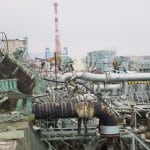The Nuclear Regulatory Commission (NRC) on Tuesday delayed approving a recommendation made by technical staff that calls for upgrades or replacements of "hardened" venting systems at the nation’s 31 Mark I and Mark II boiling water reactors (BWRs), giving staff a year instead to assess other options and produce a "technical evaluation" on the proposal.
The NRC commissioners directed staff to follow a two-track approach for further improvements to systems for safely venting pressure during potential accidents at the reactors, in response to the Fukushima accident in March 2011. It gave the staff 60 days to finalize a March 2012 order, which will require vents to handle elevated pressures, temperatures, and radiation from a damaged reactor. The order will also ensure plant personnel can operate vents safely under these accident conditions.
It also gave the staff a year to produce a technical evaluation to support rulemaking on filtering, gathering more public input as it completes its analysis. Directing the staff to consider both the use of a filter to be placed on the vent, as well as a more performance-based approach using existing systems to achieve a similar reduction in radioactive release during an accident, the commission said the draft rule and final rule must be ready by March 2017.
A vent generally refers to a pipe connected to the primary containment of a nuclear power plant and leading to the plant’s exhaust stack. It is designed to allow gases inside the containment to be removed. “The major problem at Fukushima was getting the containment vents open,” said Doug True, president of ERIN Engineering and Research told Nuclear Insight last fall. “Significant delays in the decision to open the vents, combined with the Japanese decision-making process and difficulties in opening the vent valves, delayed the venting action, which in turn led to hydrogen explosions.”
The NRC’s decision was widely viewed as a victory for the nuclear industry. The NRC has estimated that filtered vents could cost up to $15 million, but other estimates put costs of equipment at $30 million or more.
But media reports accusing the nuclear energy industry of opposing the installation of filtered vents on Mark I and II BWRs are incorrect, say Jason Zorn, assistant general counsel, and Steven Kraft, senior technical advisor at the Nuclear Energy Institute (NEI ). The issue is a technical one. "In the extremely unlikely event that an accident progresses to the point of the fuel melting through the reactor vessel onto the containment floor, it is imperative that water be injected into containment to cool the fuel debris on the floor," they say. "If not, radiation releases will occur from numerous locations in the containment building and bypass the vent. If the vent is bypassed, it doesn’t help if there is a filter on the vent, because it, too, will be bypassed."
Filtering strategies based on the individual plant evaluations could result in the installation of a vent filter, "if that’s what makes sense for a given plant," they said.
Sources: POWERnews, NRC, Nuclear Insight, NEI








